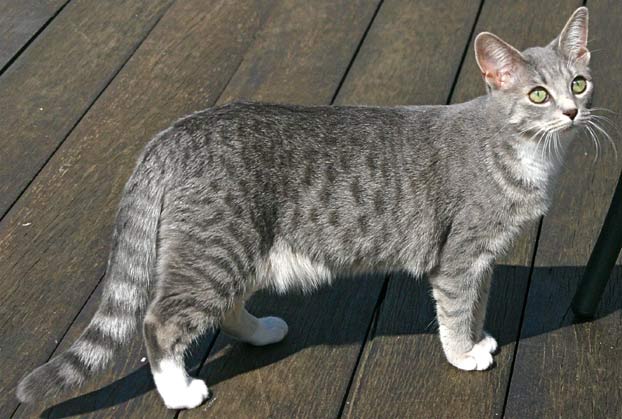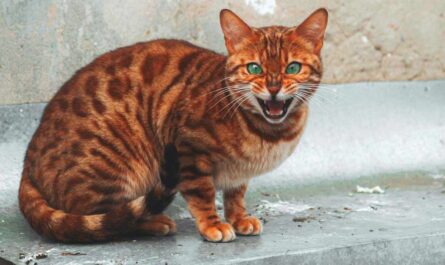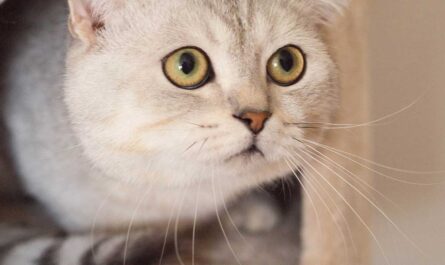Why is my cat blinking its eyes often? Cats, with their enigmatic behaviors, often leave their owners puzzled. One such behavior that frequently raises concern is excessive blinking. When a cat blinks more than usual, it can be a sign of various underlying issues. Understanding these reasons is crucial for ensuring the well-being of our feline friends. One such behavior is frequent blinking of the eyes, which can be puzzling and concerning for cat owners. In this exploration, we delve into the reasons behind this curious feline habit, shedding light on potential causes and offering insights into cat behavior.
Why is my cat blinking its eyes often?
Excessive blinking in cats can be indicative of various underlying issues, ranging from minor irritations to more serious health conditions. As responsible pet owners, it’s essential to observe our feline companions closely and seek veterinary care whenever we notice any abnormal behavior, including excessive blinking. Early intervention can often prevent minor issues from escalating into more significant problems, ensuring a happy and healthy life for our beloved pets.
1. Sensory Sensitivity
Environmental Triggers: Cats, with their acute senses, are susceptible to environmental stimuli that may trigger excessive blinking. Factors like dust particles dancing in the air, the acrid tang of smoke, or potent odors can agitate their delicate ocular membranes. Much akin to humans squinting in the glare of bright sunlight, felines may resort to frequent blinking to shield their eyes from irritants and maintain visual clarity.
Medical Conditions: Beyond environmental factors, underlying medical issues can also provoke heightened blinking in cats. Eye infections, allergies, or other ocular ailments may induce discomfort, prompting a cat to blink excessively in an instinctive bid to alleviate the irritation. Such blinking serves as a protective mechanism, a reflexive response to shield the eyes from potential harm or discomfort.
2. Physical Discomfort
Reflexive Response: Blinking, for cats, is more than just a biological function—it’s a reflexive response to physical discomfort. When faced with pain or irritation in their eyes or the surrounding areas, cats may resort to increased blinking as a means of self-soothing. Conditions like corneal ulcers or the presence of foreign objects in the eye can trigger this response, as the feline instinctively tries to alleviate the discomfort through blinking.
Indicators for Care: Monitoring a cat’s blinking behavior can offer valuable insights into their physical well-being. Owners should remain vigilant, particularly if they observe a sudden increase in blinking frequency. Such changes could signify underlying issues that warrant prompt veterinary attention. By recognizing blinking patterns and understanding their potential causes, owners can ensure timely intervention to address any discomfort or ailments affecting their feline companions.
3. Behavioral Expression
Communication through Blinking: Cats, known for their expressive body language, utilize blinking as a means of communication. Excessive blinking serves as a subtle yet significant way for them to convey various emotions and intentions. Slow blinking, often dubbed “cat kisses,” signifies trust and affection, offering a glimpse into the deep bond between feline and human. Conversely, rapid blinking or squinting may betray feelings of discomfort, fear, or stress, acting as a visual cue for attentive observers to gauge the cat’s emotional state.
Interpreting Signals: Understanding a cat’s blinking behavior requires keen observation of accompanying cues and environmental context. By paying attention to other behaviors and situational factors, such as the presence of unfamiliar stimuli or changes in routine, owners can decipher the underlying message conveyed through blinking. This nuanced understanding facilitates better communication and strengthens the bond between cat and caregiver.
4. Vision Problems
Manifestations of Impaired Vision: Blinking abnormalities in cats can serve as early indicators of vision problems. Given their reliance on sharp eyesight for hunting and navigating their surroundings, any disruption to their visual acuity can significantly impact their quality of life. Conditions like cataracts, glaucoma, or retinal issues may manifest through alterations in blinking patterns. Cats experiencing vision difficulties may blink more frequently as they struggle to perceive their environment accurately.
Importance of Regular Check-ups: Routine veterinary examinations play a crucial role in identifying and addressing vision impairments in cats. Early detection allows for timely intervention and management of underlying conditions, potentially preserving or restoring vision to improve the cat’s overall well-being. By prioritizing regular check-ups and promptly addressing any blinking abnormalities, owners can safeguard their feline companions from the detrimental effects of untreated vision problems.
5. Stress and Anxiety
Understanding Feline Stress: Much like their human counterparts, cats are susceptible to stress and anxiety stemming from various sources. Changes in their environment, routine disruptions, or alterations in social dynamics can all contribute to heightened stress levels. Excessive blinking may surface as one of the subtle manifestations of this underlying psychological turmoil. When faced with stressors, cats may resort to coping mechanisms such as increased blinking, alongside other nervous behaviors like pacing, hiding, or excessive grooming.
Cultivating a Soothing Environment: Mitigating stress-related blinking entails creating a tranquil and reassuring atmosphere for the feline companion. Introducing stability in their surroundings, maintaining consistent routines, and providing ample opportunities for mental and physical stimulation through enrichment activities can help alleviate anxiety. Additionally, offering affectionate reassurance and positive reinforcement can reassure the cat, fostering a sense of security and emotional well-being.
6. Eye Infections
Prevalence of Eye Infections: Eye infections represent a common concern among feline health issues, potentially triggering discomfort and irritation that prompts increased blinking. These infections, caused by bacterial, viral, or fungal agents, target the delicate ocular tissues, inducing symptoms such as redness, discharge, and excessive tearing. In response to the discomfort, cats may instinctively blink more frequently to alleviate irritation and expel foreign particles from their eyes.
Timely Veterinary Intervention: Prompt veterinary attention is paramount in addressing and managing eye infections effectively. Through comprehensive examinations and diagnostic tests, veterinarians can accurately identify the underlying cause of the infection and prescribe appropriate treatment measures. Timely intervention not only alleviates discomfort for the cat but also mitigates the risk of potential complications that may arise from untreated infections. By prioritizing proactive healthcare measures, owners can safeguard their feline companions’ ocular health and overall well-being.
7. Allergic Reactions
Understanding Feline Allergies: Cats, akin to humans, can fall prey to the woes of allergic reactions triggered by a myriad of allergens. From the ubiquitous pollen swirling in the air to microscopic dust mites nestled in household corners, these allergens can incite immune responses, ushering in inflammation and irritation. Among the array of allergic manifestations, allergic conjunctivitis emerges as a common affliction, marked by telltale signs of redness, itchiness, and swelling around the eyes. Excessive blinking, in this context, serves as a poignant testament to the feline’s plight as it endeavors to quell the relentless itch and discomfort besieging its delicate ocular orbs.
Managing Allergic Symptoms: Confronting allergic reactions necessitates a multifaceted approach, with a pivotal emphasis on identifying and mitigating exposure to offending allergens. By sleuthing out potential culprits lurking in the environment—be it pollen wafting through open windows or insidious dust mites colonizing upholstery—owners can curtail the cat’s allergen encounters, thereby tempering the intensity of allergic symptoms. Coupled with judicious veterinary guidance and tailored treatment modalities, this proactive stance equips owners with the tools to assuage their feline companion’s allergic woes and diminish the incessant blink of discomfort.

8. Neurological Disorders
Unraveling Neurological Mysteries: The intricate workings of the feline nervous system can unravel into a tapestry of enigmatic maladies, with neurological disorders casting a shadow of uncertainty over the cat’s well-being. Excessive blinking, among the myriad of potential symptoms, emerges as a subtle yet significant red flag signaling underlying neurological perturbations. From seizures wracking the brain’s delicate circuitry to nerve damage impeding smooth sensory transmission, these disorders can manifest in a spectrum of aberrant behaviors and motor functions, including blinking irregularities.
Seeking Diagnostic Clarity: Navigating the labyrinthine realm of neurological disorders mandates a concerted effort spearheaded by veterinary expertise and diagnostic acumen. A comprehensive evaluation, encompassing neurological examinations and diagnostic tests, serves as the cornerstone for unraveling the tangled web of symptoms and arriving at a precise diagnosis. Armed with this diagnostic clarity, veterinarians can chart a course of intervention tailored to the specific needs of the afflicted feline, fostering optimal management and improved quality of life amidst the neurological labyrinth.
9. Medication Side Effects
Understanding Pharmaceutical Ramifications: The administration of medications to feline companions, while often necessary for therapeutic purposes, can usher in a spectrum of side effects that reverberate through the cat’s physiology and behavior. Certain pharmaceutical agents, particularly those targeting the nervous system or ocular function, wield the potential to precipitate changes in blinking patterns as an unintended consequence. Whether it be anticonvulsants disrupting neuronal signaling or medications compromising ocular integrity, vigilant monitoring of the cat’s behavior becomes imperative to discern and address medication-induced alterations promptly.
Vigilance in Medication Management: In navigating the intricate terrain of feline pharmacotherapy, owners assume the role of vigilant custodians tasked with safeguarding their cat’s well-being amidst potential medication-related perils. Heightened awareness of potential side effects, coupled with astute observation of the cat’s demeanor and physiological responses, empowers owners to detect and report any aberrant symptoms to their veterinary care provider promptly. Collaboration with the veterinarian facilitates timely adjustments to dosage regimens or exploration of alternative treatment modalities, ensuring optimal therapeutic efficacy while minimizing the risk of adverse medication effects.
10. Aging Process
Embracing the Inevitable Passage of Time: As feline companions traverse the temporal continuum, the inexorable march of time unveils a panorama of physiological and behavioral changes that accompany the aging process. Senior cats, in particular, become ensconced in the embrace of age-related conditions that herald subtle yet discernible alterations in blinking patterns. The onset of dry eye syndrome, a hallmark of geriatric ocular dysfunction characterized by diminished tear production and ocular moisture, may precipitate an uptick in blinking frequency as the cat endeavors to alleviate ocular discomfort.
Nurturing Through the Golden Years: Embracing the twilight years of a feline companion’s life necessitates a compassionate commitment to proactive geriatric care and accommodation of age-related needs. Regular veterinary consultations serve as beacons of guidance in navigating the labyrinthine landscape of senior feline health, facilitating early detection and management of age-related maladies. By tailoring care regimens to address specific geriatric challenges, such as age-related vision impairment or cognitive decline, owners can embark on a journey of nurturing companionship that enriches the latter chapters of their feline’s life with dignity and comfort.
11. Environmental Stimuli
Navigating the Feline Perception: Within the intricate tapestry of feline perception, environmental stimuli unfurl as threads that weave into the fabric of their behavior, including the subtle dance of blinking patterns. Cats, renowned for their keen sensory acuity, exhibit nuanced responses to shifts in their surroundings, particularly in the realm of lighting dynamics. Sudden alterations in illumination, whether a burst of blinding brightness or enveloping darkness, elicit reflexive blinking as the feline adapts its vision to the new luminous landscape.
Unraveling the Tapestry of Stress: Beyond the realm of luminance lies a landscape fraught with the shadows of unfamiliarity and apprehension. Cats, creatures of habit, may find themselves ensnared in the tendrils of anxiety when confronted with novel or stressful environments—a state of heightened vigilance echoed in the rhythm of increased blinking. Yet, within the sanctuary of familiarity and comfort, cats find solace, their blinking a tranquil cadence attuned to the harmonious symphony of their cherished surroundings.
12. Eye Strain
The Gaze’s Toll: In the age of screens and ceaseless visual stimuli, both feline and human eyes alike bear the burden of prolonged scrutiny—a burden that finds expression in the rhythmic flutter of blinking. Cats, with their gaze trained on avian interlopers beyond the windowpane or elusive prey darting across the room, embark on a journey of focused observation that exacts its toll on ocular fortitude. The crescendo of blinking, an involuntary symphony of fatigue and release, punctuates the narrative of visual engagement. Health books, guides, exercises, habits, Diets, and more
Harmonizing Rest and Stimulation: Amidst the ebb and flow of visual exploration, lies the imperative of balance—a delicate equilibrium between restorative repose and tantalizing stimulation. Providing sanctuaries of respite where feline companions may retreat from the ceaseless barrage of visual stimuli, coupled with opportunities for play and mental engagement, serves as the cornerstone of ocular well-being. Within this harmonious interplay of rest and activity, the rhythm of blinking finds its cadence, a gentle melody of ocular rejuvenation echoing through the feline realm.
13. Social Interaction
Conversing in Blink: Within the intricate tapestry of feline social dynamics, blinking emerges as a silent dialogue—a nuanced exchange of trust, affection, and camaraderie. Cats, astute observers of human and feline behavior alike, punctuate social interactions with rhythmic blinks, each fluttering eyelid a testament to the bonds that intertwine their lives. Slow blinking, a gesture akin to a whispered caress, speaks volumes of the mutual trust and affection shared between feline and human companions.
Navigating the Social Terrain: Yet, amidst the harmonious symphony of social communion, lie the shadows of conflict and discord—an undercurrent of tension that reverberates through the feline psyche. Social conflicts or negative interactions, whether with fellow felines or unfamiliar interlopers, cast a pall of anxiety over the feline realm, manifesting in altered blinking patterns. Understanding the subtle nuances of feline body language and vocalizations becomes paramount in navigating the labyrinth of social dynamics, fostering an environment conducive to harmonious coexistence and minimizing the specter of stress-induced blinking.
14. Dietary Factors
Feeding the Gaze: Beyond the realm of social intricacies lies a realm governed by the silent machinations of nutrition—a domain where the flicker of a cat’s eyelid may betray the subtle whispers of dietary imbalances. Essential nutrients, such as the stalwart guardian’s vitamins A and E, stand sentinel over ocular health, their absence or deficiency heralding the onset of ocular maladies and aberrant blinking patterns. Within the crucible of dietary stewardship, lies the power to fortify the feline gaze against the ravages of nutritional insufficiency, through the provision of a meticulously balanced diet tailored to the cat’s unique physiological needs. Cat accessories on Amazon
Charting the Path to Ocular Wellness: As stewards of feline well-being, owners embark on a journey of nutritional enlightenment—a quest to navigate the labyrinthine landscape of dietary adequacy and ocular health. Through judicious selection and provision of nutritionally complete diets, calibrated to the cat’s age, health status, and specific dietary requirements, owners safeguard against the encroachment of nutritional deficiencies that threaten ocular integrity. In this symbiotic dance of nourishment and ocular wellness, each morsel becomes a testament to the enduring bond between caregiver and companion, nourishing not only the body but also the soul.
Other Interesting Articles
- How to Help Your Cat Overcome Fears in 13 Strategic Steps
- 13 Easy Tricks To Teach Your Cat: Basic Feline Training Guide
- How To Train Your Cat: 15 Easy Steps To Teach New Things
- Why Do Cats Have Tails? 4 Fun Facts You Didn’t Know
- 16 Simple Ways To Establish A Stronger Bond With Your Cat
- How To Train Your Cat/Kitten To Sit: Steps, Command, Guide
- Cat Giving Birth: From Your Feline Pregnancy to Kitten Care
- Fading Kitten Syndrome: Age, Causes, Symptoms, Treatment
- Kitten Bottle Feeding: Chart, Tips, Recipe, Challenges, Guide
- Cat Pregnancy: Timeline, Signs, Labor, Behavior, Stages
- 16 Silent Killers of Cats Every Pet Owner Must Be Aware Of
- Do Mother Cats Discipline Their Kittens? A Guide To Owners
- How To Take Care of A Kitten 6 Weeks Old: A 7-Step Guide
- How To Tell If Your Cat is Trying to Hurt You: A To-Do Guide
- How To Tell If Your Cat Has Tapeworms: What You Can Do
- How To Tell If My Cat is in Pain After Neutering: What To Do
- How To Get A Cat To Trust You Fast: Signs, Tips, Techniques
- 12 Signs Your Cat is a Boy: Tips To Distinguish A Male Cat
- Single Kitten Syndrome: Age, Signs, Symptoms, Treatments
- How To Tell If Your Cat Can’t See Well: What You Can Do



